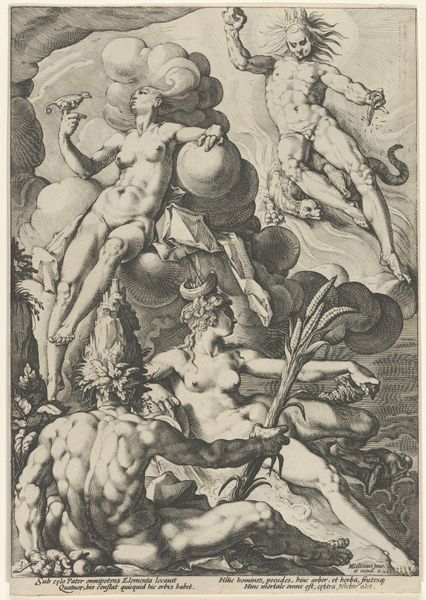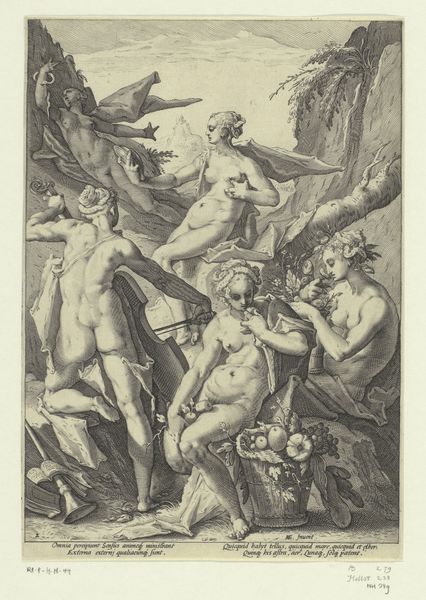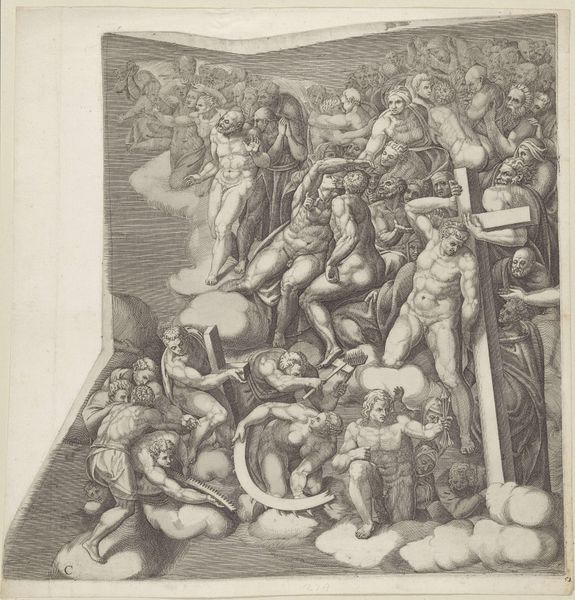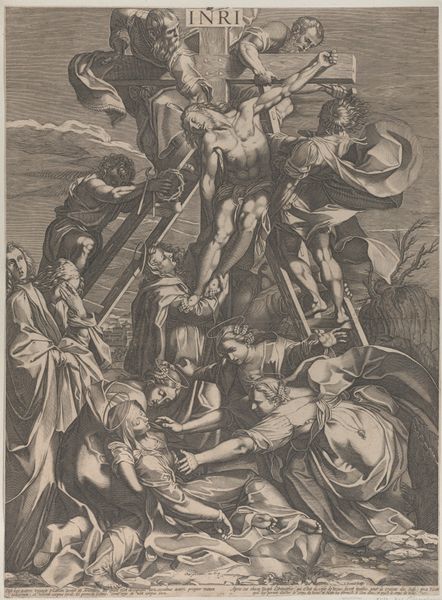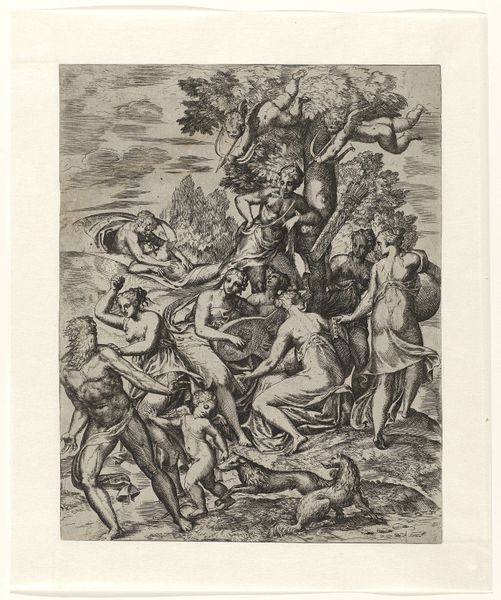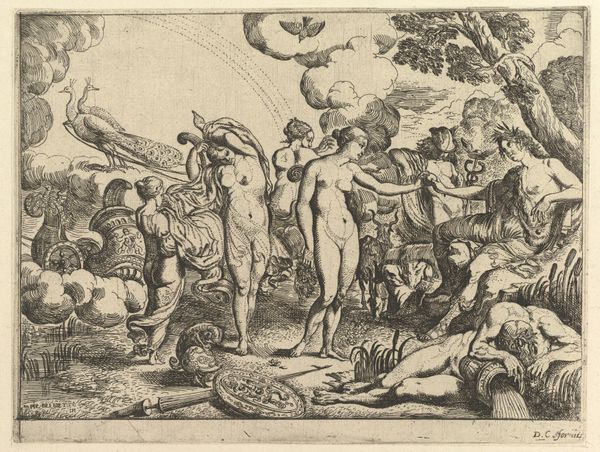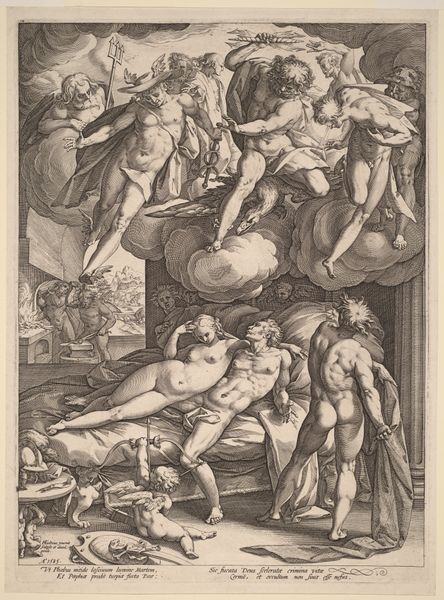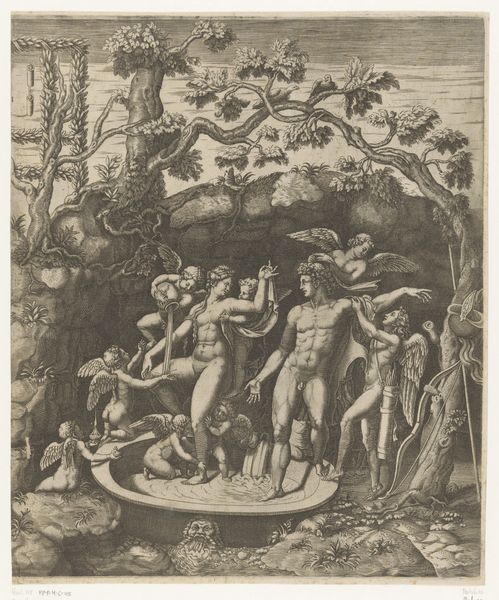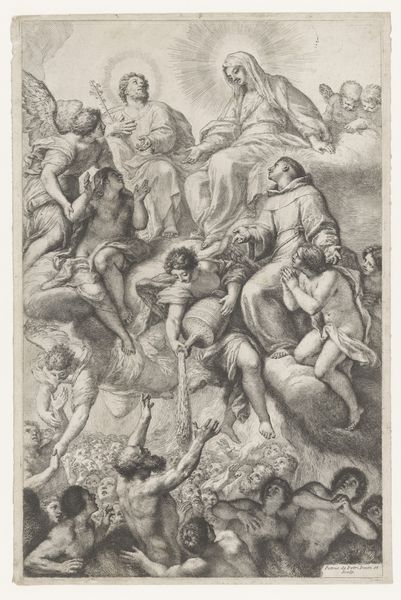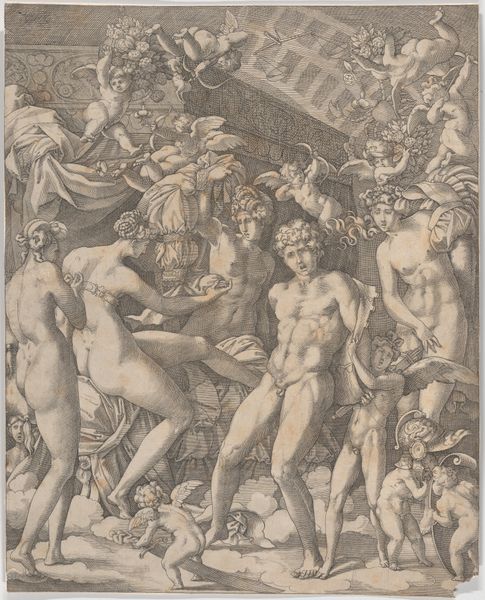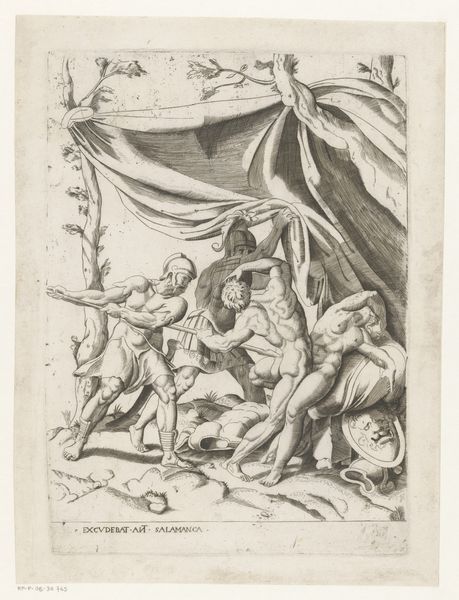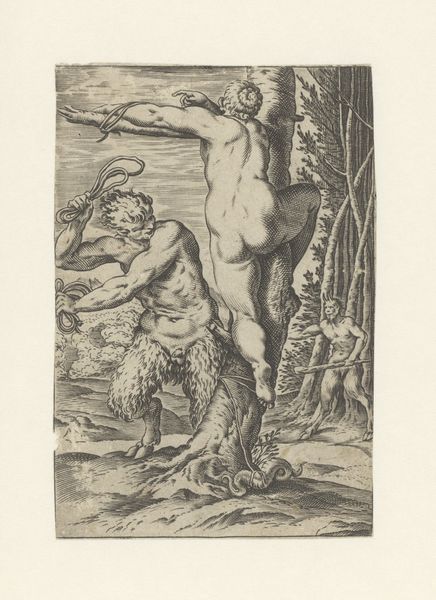
#
old engraving style
#
pencil drawing
Dimensions: height 412 mm, width 336 mm
Copyright: Rijks Museum: Open Domain
Curator: What strikes me immediately about this print, even without knowing its narrative, is the density. The eye struggles to find a resting place amid this swarm of figures. Editor: I agree. "Mars en Venus," dating back to around 1575, does present an intense tableau. The materiality, the engraving, necessitates a focus on line and the massing of figures to build form. Considering it's in the collection of the Rijksmuseum, we can place it within the context of Dutch Golden Age printmaking, reflecting an era fascinated with allegorical narratives. Curator: Right. It's interesting how the engraver—whose name we, unfortunately, don’t have—negotiates gender and power through these classical figures. Mars looks almost… disturbed. The typical heroic masculinity is unsettled here, even disrupted. Meanwhile, Venus, surrounded by cherubic figures, maintains composure, seemingly unbothered. What commentary might we infer about the power dynamics of the period? Is this perhaps an early questioning of masculine authority in the face of feminine strength? Editor: We could read it that way. The making of this image, however, interests me most. Think about the labor involved in cutting those fine lines into the copperplate, the physical act of producing multiples for circulation. These prints weren't precious singular objects like paintings; they were meant to be distributed, consumed. It would be useful to compare the lines and massing used to express skin texture and volume here with those used by similar artisans who are more famous today. How do production means impact the work’s reception, its perceived value, or what it communicated about labor and the consumer? Curator: Absolutely, tracing the journey of images as commodities through social strata is crucial. But it is hard not to notice the almost frantic energy the piece conveys to modern audiences—a reflection perhaps on the then state of gendered violence, of sexual and class identity and access. Consider how those with more money would have acquired art objects, while women struggled more in a patriarchal culture, with implications to gender. And this intersection between form, subject matter, and intended audience... it opens a complex discourse. Editor: Indeed, those complex relationships and inequalities within the art making system were inherent in those production mechanisms—to the benefit and detriment of artisans in equal measure. Viewing it in such intersectional lenses illuminates it even further for us. Curator: Precisely. Bringing these lenses broadens this narrative from a simple mythological scene to a poignant commentary. Editor: The materials, methods, and circulation contribute as well. Fascinating!
Comments
No comments
Be the first to comment and join the conversation on the ultimate creative platform.


